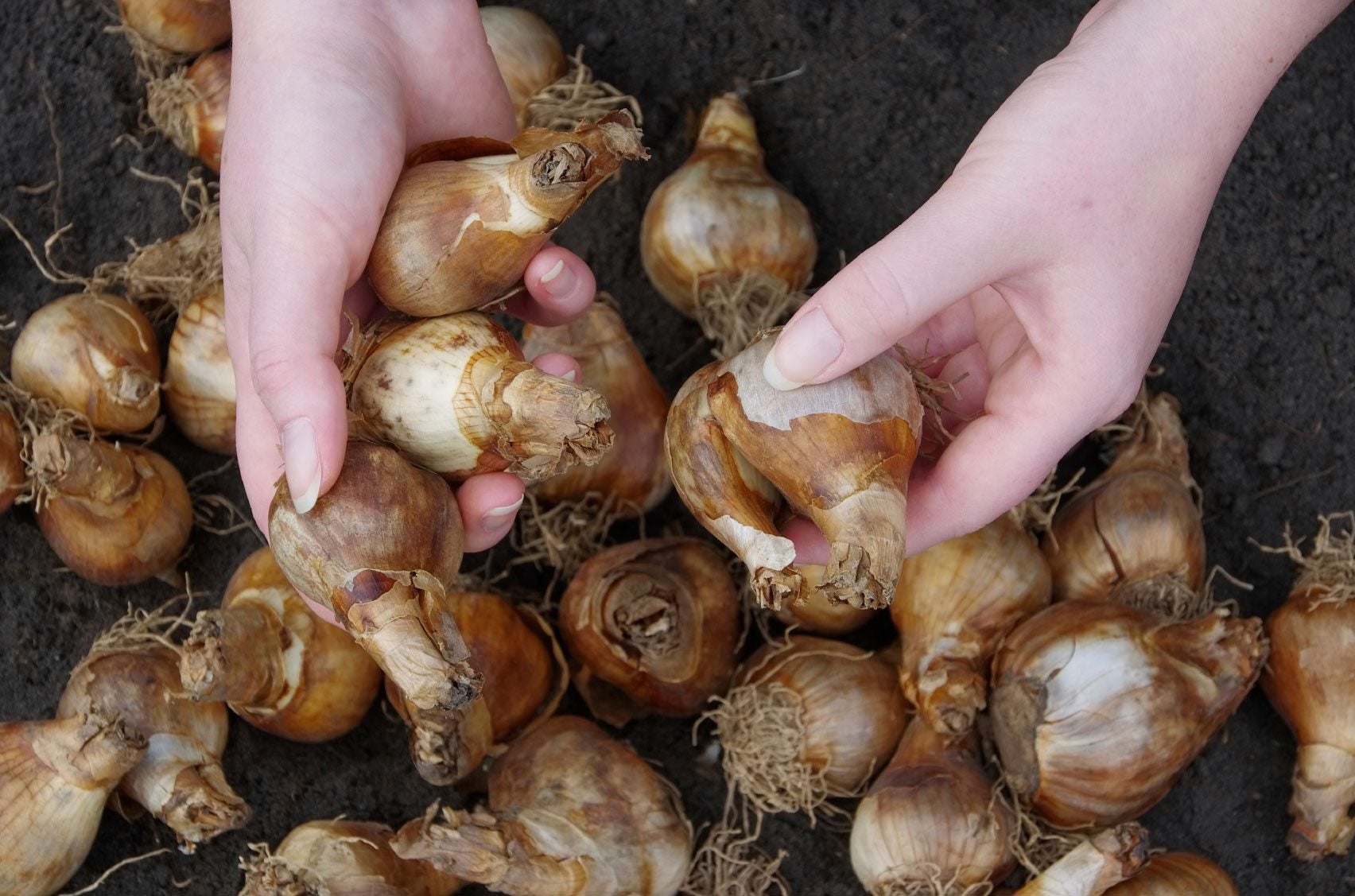How To Propagate Flower Bulbs

Getting more flower bulbs is easy. You go to the store and purchase bulbs, but this can be expensive. Conveniently, however, many bulbs can make more of themselves. This gives you an easy and less expensive way to get more bulbs and saves you a trip to the store. Daffodils, for example, are excellent at making more of themselves. Your plant has one bulb, and that bulb makes offsets, or daughter bulbs, at the edge of its basal plate. The mother bulb will nourish the daughters as they grow. In time, the daughter bulbs will be healthy and large enough to start flowering by themselves. Soon enough, the clump of bulbs will become so crowded together that they start competing for nourishment in the soil. When this happens, flowering can decline. You will want to step in at that point and start the process to separate them.
How to Separate Bulb Offsets
The best time to separate the bulbs is after the flowers have faded but the leaves are still growing. It's easier to find bulbs when the leaves are still attached than after the leaves are gone and they're hiding in your garden soil. The offsets are actual, actively growing plants. This means they require different handling than bulbs that are dormant. You will have to dig and divide them a clump at a time. This reduces the risk of drying out the roots. Follow these steps to plant your cultivated offsets:
- If you are putting the bulbs in a new location, you have to prepare the soil first. Add your organic matter and fertilizer. Have the same type of materials available to help rejuvenate the original location as well.
- Dig your bulbs up one clump at a time. You might end up with 50 bulbs at once, so don't dig up more than you can handle!
- Cover your bulbs with wet newspaper as you work to prevent them from drying out. Quickly and carefully separate the bulbs by gently twisting and rocking the bulbs back and forth. This will help separate them easily.
- Replant as many as you want to plant and be sure to put the bulbs in the ground at the appropriate depth. You can replant all of the bulbs or only those large enough to flower within a year.
- Water the new plantings regularly. This is important because you want the roots on the offsets to re-establish themselves quickly, so the leaves get nourishment. This allows the bulbs to store more food and flower quicker.
- Mulch the area. Adding a layer of mulch helps to shade the soil and keep it cool, which aids in holding moisture.
As you complete each clump of bulbs, go ahead and dig up another. However, don't dig up another until you're done.
Separating Cormels
Although some bulbs make offsets, flowers that grow from corms make little cormels or baby corms. After you dig at the end of the growing season and find the little cormels, store them separately from the large corms. Before you plant the little cormels the following spring, you will want to soak them in lukewarm water for a couple of hours. They have a hard tunic, and the water will help them root more easily by softening the tunic. Your new gladiolus will probably flower the second year, not the first.
Flower Bulbs and Seeds
Finally, offsets and cormels aren't the only way to propagate. Some bulbs reseed on their own. Crocuses are famous for it. Their seedlings look like little blades of grass when they first come up. You don't want to disturb them. The bulb is so tiny, it can die easily. Wait until the plants are a couple of years old before attempting to transplant them to another location.
Sign up for the Gardening Know How newsletter today and receive a free copy of our e-book "How to Grow Delicious Tomatoes".